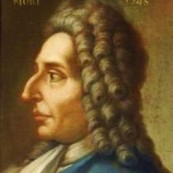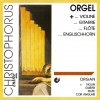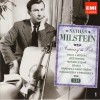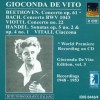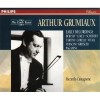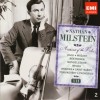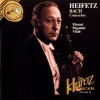Composers
Tomaso Antonio Vitali (March 7, 1663 – May 9, 1745) was an Italian composer and violinist from Bologna, the eldest son of Giovanni Battista Vitali. He is known mainly for a chaconne in G minor for violin and continuo, which was probably not written by Vitali (it was ascribed to him in a 19th-century edition by German violinist Ferdinand David.
Vitali studied composition in Modena with Antonio Maria Pacchioni, and was employed at the Este court orchestra from 1675 to 1742. He was a teacher, whose pupils included Evaristo Felice dall'Abaco, Jean Baptiste Senaillé, Girolamo Nicolò Laurenti and Luca Antonio Predieri.
Authentic works by Vitali include a set of trio sonatas published as his opus numbers 1 and 2 (1693), sonatas da camera (chamber sonatas), and violin sonatas (including his opus 6)[citation needed] among other works. Among those that have been recorded include all of the op. 1 (on Naxos 8.570182), three of the violin sonatas (on the Swiss label Gallo), and some of the sonatas from the opp. 2 and 4 sets (opus 4, no. 12 on Classica CL 101 from Finland.)
He died at Modena.
A chaconne is a musical form used as a vehicle for variation on a repeated short harmonic progression over a ground bass. The Chaconne was marked by the copyist, at the time of transcription, in the upper margin of the first page of the Dresden manuscript as "Parte del Tomaso Vitalino" (Tomaso Vitalino's part), who may or may not be Vitali. One striking feature of the "Vitali" Chaconne's style is the way it wildly changes key, reaching the far-flung territories of B flat minor and, also, D sharp minor, uncharacteristic of the Baroque era, as change of key signature became typical only in Romanticism. Despite its dubious provenance (the manuscript Sächsische Landesbibliothek Dresden, Mus. 2037/R/1, in the hand of a known copyist working at the Dresden court between 1710 and 1730) the piece has been ever popular amongst violinists. For example, Jascha Heifetz chose it, in a "very much arranged and altered version", with organ accompaniment, to open his New York debut in Queen's Hall on 5 May 1920.
Refine by search
view allBiography
Tomaso Antonio Vitali (March 7, 1663 – May 9, 1745) was an Italian composer and violinist from Bologna, the eldest son of Giovanni Battista Vitali. He is known mainly for a chaconne in G minor for violin and continuo, which was probably not written by Vitali (it was ascribed to him in a 19th-century edition by German violinist Ferdinand David.
Vitali studied composition in Modena with Antonio Maria Pacchioni, and was employed at the Este court orchestra from 1675 to 1742. He was a teacher, whose pupils included Evaristo Felice dall'Abaco, Jean Baptiste Senaillé, Girolamo Nicolò Laurenti and Luca Antonio Predieri.
Authentic works by Vitali include a set of trio sonatas published as his opus numbers 1 and 2 (1693), sonatas da camera (chamber sonatas), and violin sonatas (including his opus 6)[citation needed] among other works. Among those that have been recorded include all of the op. 1 (on Naxos 8.570182), three of the violin sonatas (on the Swiss label Gallo), and some of the sonatas from the opp. 2 and 4 sets (opus 4, no. 12 on Classica CL 101 from Finland.)
He died at Modena.
A chaconne is a musical form used as a vehicle for variation on a repeated short harmonic progression over a ground bass. The Chaconne was marked by the copyist, at the time of transcription, in the upper margin of the first page of the Dresden manuscript as "Parte del Tomaso Vitalino" (Tomaso Vitalino's part), who may or may not be Vitali. One striking feature of the "Vitali" Chaconne's style is the way it wildly changes key, reaching the far-flung territories of B flat minor and, also, D sharp minor, uncharacteristic of the Baroque era, as change of key signature became typical only in Romanticism. Despite its dubious provenance (the manuscript Sächsische Landesbibliothek Dresden, Mus. 2037/R/1, in the hand of a known copyist working at the Dresden court between 1710 and 1730) the piece has been ever popular amongst violinists. For example, Jascha Heifetz chose it, in a "very much arranged and altered version", with organ accompaniment, to open his New York debut in Queen's Hall on 5 May 1920.
